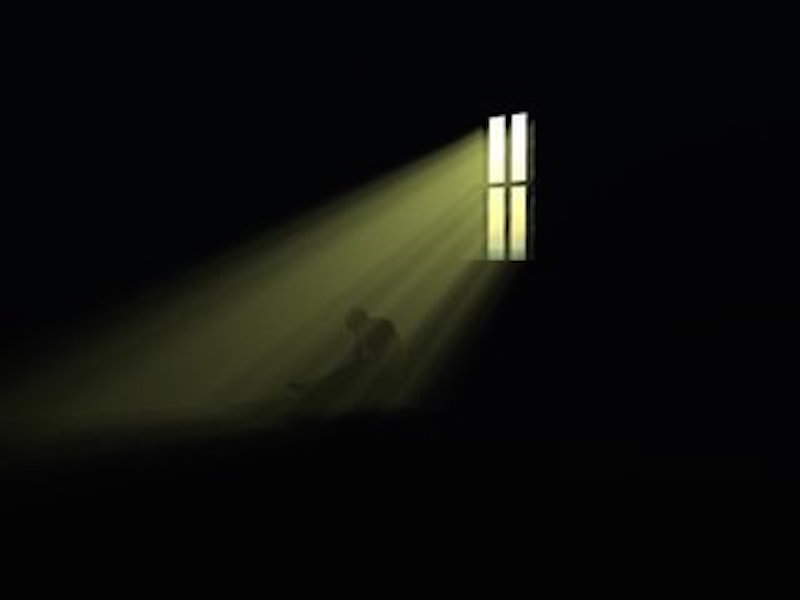Celebrating Patterns
Jayne English
 “The patterns/Of any starry summer night might be identical/To the summer heavens circling inside the skull.”—Pattiann Rogers
“The patterns/Of any starry summer night might be identical/To the summer heavens circling inside the skull.”—Pattiann Rogers
I started reading David Foster Wallace’s Infinite Jest twice. Shortly into the second attempt I got distracted by some intriguing quotes from Dostoevsky’s The Brothers Karamazov. It’s far less dense than Jest (with the added bonus of making me feel less dense) so I’m now ankle deep in its rising waters. But before abandoning Infinite Jest again, in the hope of piecing together its mystifying puzzle, I spent some time reading about it and watching some video interviews of Wallace. Something Wallace said gives me a slight grasp of how to approach it (you know, the next time I try to read it). He said the structure of the book is based on a Sierpinski triangle, which is made up of many triangles, and in a static file looks like this:
You can see it animate here. This visual explained a lot about the shifting images in Jest, and why my more linear and 2-dimensional brain has trouble processing it. Before I waded into Karamazov, Jest had me thinking about patterns.
God’s fascination with patterns is seen in galaxies and in a mind that can build the structure of a book on an intricate series of triangles. The Sierpinski triangle is just one of an abundance of fractals that are found everywhere. Wikipedia defines fractal like this: “a natural phenomenon or a mathematical set that exhibits a repeating pattern that displays at every scale.”
The Sierpinski triangle is a geometric fractal. There are algebraic fractals which are simple equations calculated exponentially that yield infinitely complex, and breath taking, symmetrical designs (as in the cover photo). I was familiar with some nature fractals—sunflower centers and cabbage leaves, for instance—and the algebraic fractals. I hadn’t thought about trees and rivers as being fractals in the way they produce a continuous pattern of branching. But with all these patterns spiraling through my mind, what surprised me was the realization that the church has a fractal influence on our lives.
I used to think church was where we go to be refreshed for a new week. Where we lean into God through the teaching of someone better equipped than we are to see how the gospel is or isn’t permeating our lives. And where we praise and thank God, soul to soul, with others on a similar trajectory. But more than anything, now I see it shows us, by weekly repetition, that these are daily patterns for us to inhabit, no matter in what part of the intricacies of the design we find ourselves. The Wikipedia definition reveals our fractal relationship with the church as it establishes “a repeating pattern that displays at every scale.” Church’s rhythms repeat themselves in our natures, at every scale of our lives: from our center, to our family, to our extended family, friends, coworkers, ad infinitum.
Fractals, when termed “self-similar,” also point to God having made us “self-similar” to him. He repeats the patterns of his nature in us, as Pattiann Rogers says in her poem “The Origin of Order”:
Flesh of the sky, child of the sky, the mind Has been obligated from the beginning To create an ordered universe As the only possible proof of its own inheritance.
Fractals, and the fact that someone can write a book that imitates this mathematical architecture, boggle the mind. What do these permeating and far-reaching patterns hint about the mind and heart of God? Can we contemplate the scope, the beauty of even one attribute of God fractalized in a never-ending exponential pattern?



















